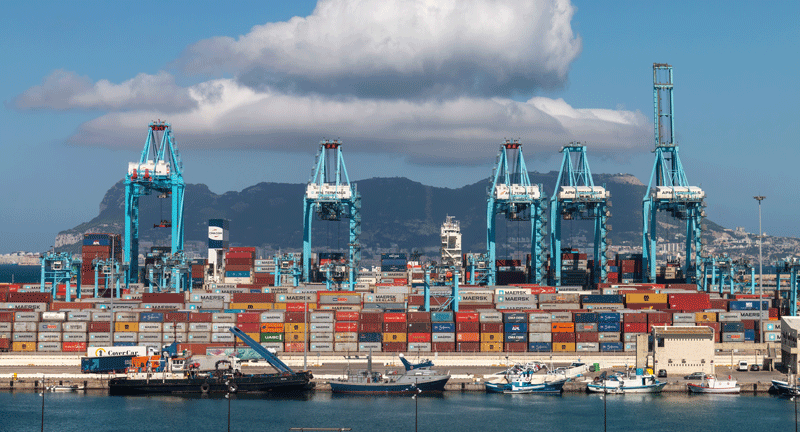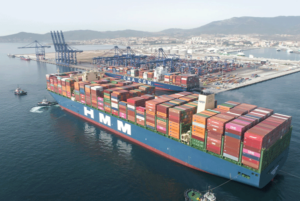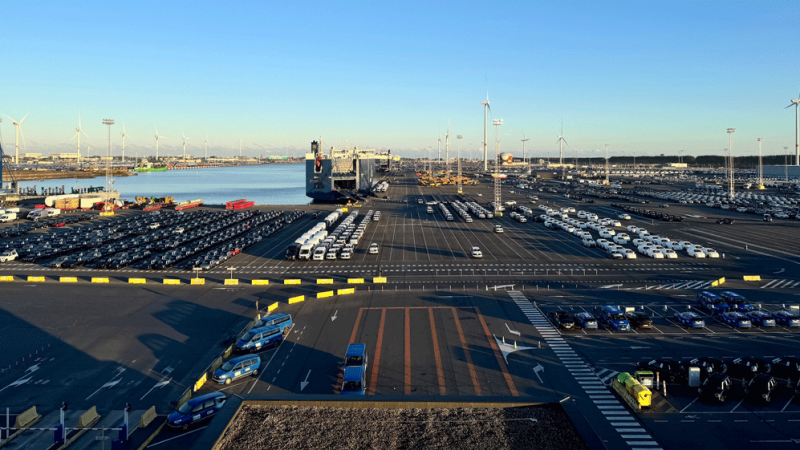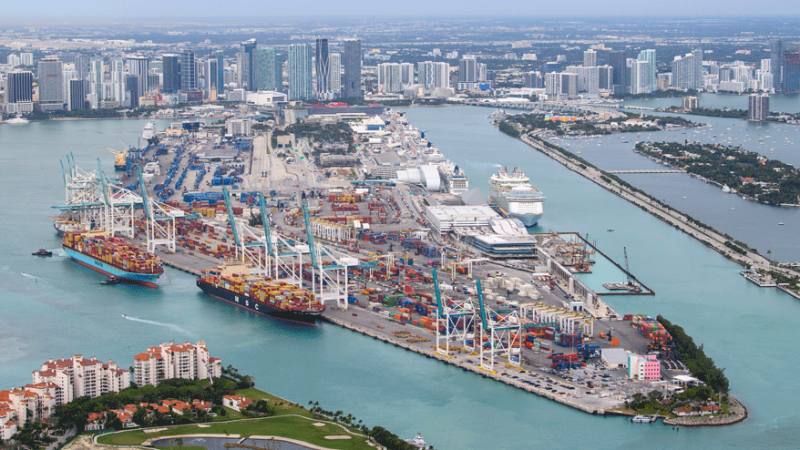Situated in Andalusia, Spain, the APBA (Port of Algeciras Bay Authority) handles all global passenger and cargo traffic that passes through the ports of Algeciras Bay and Tarifa. Together, these ports make The Port of Algeciras, one of the five largest ports in Europe, handling as much as 107 million tonnes of cargo per year. The port authority that oversees this facility is the largest in Spain, as measured by its volume of traffic handles and volume of port activities.
That includes container and bulk cargo, Ro-Ro and passenger vessels, with container ships making up the largest part of its business. In November 2022 the Port received its 1,000th megaship, a class of vessels capable of carrying between 16,000 and 24,000 TEUs. It was a milestone for the business, one achieved through a decades-old public and private commitment to providing draughts, fenders and cranes capable of accommodating megaships to the Port of Algeciras’s quay lines.
Ro-Ro and passenger traffic are equally essential to Port of Algeciras’s operations. Every year, more than 6.1 million passengers and over 400,000 HGVs travel through the facilities at Algeciras and Tarifa.
Its location and sheer size mean that the Port of Algeciras is of great strategic importance to a huge range of industries. It serves as a maritime bridge between Europe and Africa, as well as being closely interlinked with a nearby large industrial complex. The port provides 30,000 direct and indirect jobs locally, serving as a key employer to the whole region.
We last took a look at the Port of Algeciras just over a year ago. Since then, the port authority has gone on to mark some key achievements in the development of the port and its connections to global logistics networks.

Inspecting Health
Among the developments APBA has put in place are expansions the port has made to the working capacity of its Border Control Point by increasing the number of gates for Plant Health Inspection from twelve to a total of thirty.
It is a measure that will improve efficiency at border control, while providing the highest levels of direct maritime connectivity to over 200 ports in 70 countries. This, combined with a wide range of services supplied by APBA’s cutting-edge facilities, will be of particular benefit to the transport of chilled products, enabling the facility to handle any peaks in demand.
These services include 5,264 reefer sockets and 30,000 pallets for reefer storage, as well as cold treatment for citrus fruits bound for countries such as China or the USA. The facility has also had a Digital Phytosanitary Certificate since 2020, enabling it to streamline the document inspection process and allow documentary pre-assessment of dockets before the containerised cargo’s arrival at port.
These facilities have helped to establish the Port of Algeciras’s position as the gateway for out-of-season horticultural imports to South Europe from Latin America, as well as a terminal for Andalusian agro-foodstuff exports to the North American, Middle Eastern and Asian markets.
These latest developments will support the growing number of shipping services operating through the port, including the new shipping service started up by COSCO and ONE linking Algeciras to Brazil, Argentina and Uruguay.
Growing Prospects
It is this process of ongoing investment in the Port of Algeciras facilities that has continued to drive its growth. For the first quarter of this year the Port has seen cargo throughput figures of 26.6 million tonnes, marking 3.30% on the previous year. APBA puts this growth down to a boost in liquid bulk cargo, which included 7.5 million tonnes of crude oil, unloaded and refined fuels loaded at Port of Algerica, a 14% increase.
The port has also seen a 4.6% increase in container throughput, amounting to 1.17 million TEUs handled across its two terminals. Both Algeciras Bay and Tarifa have served 900 containerships between them, 50 of them being megaships.
While these figures demonstrate impressive growth, they are still 10% down on the port’s best return for the first quarter. With activity in March tempered by a great deal of storm activity, the supply of bunkers to ships returned figures of 869,236 tonnes, an increase of 10.50%.
The continuous storm depressions that hit the Spanish mainland have affected maritime traffic, with the Tarifa-Tangiers Ville line being particularly affected. However, despite these challenges, the Port of Algeciras ended the quarter with 969,025 passengers (up 12%), 209,956 cars (up 18%) and 135,615 HGVs (up 6.9%) using its sea links.
 An Exemplar of Efficiency
An Exemplar of Efficiency
But the Port of Algeciras’ progress is marked not only by its volume of activities or how much the business has grown, but also by its status as a benchmark for efficiency on the continent. This year, once again, both the World Bank’s Container Port Performance Index (CPPI) report and Standard & Poor’s Global Consultants state have named APBA the most efficient port in Europe.
Gerardo Landaluce, Chairman of the Port of Algeciras, said that staying at the top of these rankings is “never easy: It spotlights our level of operational excellence, as well as giving us an incentive that proves we are on the right path.”
The CPPI report has been published every year by the World Bank and S&P Global Market Intelligence since 2020. It assesses ports using a criteria that includes operational efficiency, vessel response time cargo handling speed, and more. The latest edition of the CPPI has ranked the Port of Algeciras as a top ten performer, a status the Strait of Gibraltar port has enjoyed since 2021.
As Landaluce has pointed out, these accolades are the end result of years of effort from the Port and its staff working at terminals, stowage companies, and technical and nautical services at APBA and throughout the Port Community in general.








